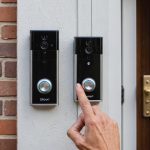Understanding Smart Home Automation
Smart Home Automation is more than a buzzword; it’s revolutionizing how we interact with our living spaces. Essentially, it refers to the use of technology to control and automate household systems through the internet. The importance of smart home automation lies in its ability to simplify daily tasks and enhance home efficiency seamlessly.
One of the significant factors in Smart Home Automation is Integration Techniques. This involves connecting various devices and systems for cohesive operation. A well-integrated system means that lights, thermostats, and security systems can communicate effectively, often managed via your smartphone.
In parallel : Seamless Living: Innovative Strategies for Merging Voice Assistants with Smartphone-Managed Smart Homes
Device Compatibility is crucial. When building a smart home, it’s imperative to choose devices that can work together. It’s common to use protocols like Zigbee or Z-Wave for unified communication across different brands.
The benefits of integrating smart technology into daily routines are numerous. Firstly, convenience, enabling control over home devices from anywhere in the world via a smartphone. Secondly, energy efficiency, as automated systems can reduce energy consumption by optimizing lighting and climate control. Finally, security features offer peace of mind through advanced monitoring and alerts.
Also to read : Unlock Your Device’s Potential: Top Strategies for Organizing Mobile Apps Efficiently
Smart home automation opens up a world of possibilities, bringing increased comfort, security, and efficiency right to your fingertips.
Setting Up Your Smart Home
A successful Smart Home Setup starts with selecting the right devices. Establish your priorities by identifying which aspects you would like to automate, such as lighting, climate control, or security. Reputable brands with a robust Device Installation process and user-friendly manuals are a good starting point. Understanding whether a device operates on Wi-Fi, Bluetooth, or another protocol can greatly impact its integration into your home.
Device Installation and Wi-Fi Configuration
Configuring a device begins with Wi-Fi Configuration. Ensure your home Wi-Fi network is strong and secure, as this is crucial for seamless device operation. Set a memorable yet secure password and position your router in a central location for optimal coverage. Following this, execute the device-specific installation instructions precisely.
For initial setups, follow these best practices:
- Connect devices individually to avoid overwhelming the network.
- Test each device’s compatibility with key household systems post-installation.
- Regularly update Wi-Fi settings and device software to maintain security and functionality.
By successfully installing devices and optimizing your Wi-Fi Configuration, you’ll lay the foundation for an efficient and manageable smart home, paving the way for a seamlessly integrated system.
Maximizing Smartphone Functionality
Smartphones have become the command centre of smart home automation, offering unparalleled control right at your fingertips. Utilizing smartphone features to enhance smart home management begins with understanding the breadth of app integration available. Key apps like Apple Home, Google Home, and SmartThings can transform your mobile device into a universal remote for household systems. These apps allow you to manage everything from lighting and security cameras to climate control systems effortlessly.
One of the simplest ways to streamline access is by customising your user interface. Organise your home screen with shortcuts to frequently used smart home apps, ensuring that accessing controls is only a tap away. Leveraging widgets can further simplify the control process by providing direct command options without opening an app.
Customisation isn’t just about ease of access; it also enhances efficiency. Set up automation rules directly from your smartphone, tailoring routines to suit daily habits. For those new to this functionality, start small by integrating basic tasks like scheduling lights to turn on at sunset, then expand to more complex routines. By fully exploring and utilising these features, you’ll unlock the true potential of your smartphone as a powerful smart home tool.
Advanced Scheduling Techniques
Discovering the art of Smart Scheduling unlocks the full potential of home automation, elevating both convenience and efficiency. Start by designing Automation Routines tailored to your daily life. Consider linking morning habits—like adjusting lighting and thermostat—to a single command.
For more sophisticated control, delve into Advanced Scheduling Techniques. Implement time-based triggers to execute tasks automatically at set intervals, streamlining chores with minimal manual input. Such strategies ensure that your environment adapts effortlessly to your lifestyle.
Incorporating geofencing can further improve these routines. By syncing your smart devices with your physical location, geofencing adjusts settings as you enter or exit specific zones, personalising the experience. Imagine arriving home with lights on and temperature just right, thanks solely to your smartphone’s intuitive operation.
When setting these systems, ensure compatibility and integration are top priorities. Key protocols like Zigbee or Z-Wave play a significant role in creating a harmonious digital ecosystem. By understanding these nuances and embracing Smart Scheduling, your home becomes not just automated but attuned to every nuance of your life, offering unmatched comfort and efficiency.
Troubleshooting Common Issues
Smart home systems, while revolutionary, occasionally face troubleshooting challenges. Connectivity issues are prevalent, typically caused by signal interference or improper device configuration. To resolve these, always start by checking your Wi-Fi strength and ensuring your router’s firmware is up-to-date. Positioning the router centrally and eliminating physical obstructions can help improve overall connectivity.
Specific device connectivity problems can arise from outdated software or firmware. Regular updates are crucial in maintaining device functionality and security. If a device ceases to respond, a soft reset—turning the device off and on—can often rectify minor glitches. Should issues persist, recalibrating devices and checking for software patches from manufacturers is recommended.
Common Problems and Solutions
- Device Disconnects Repeatedly: Check for Wi-Fi channel interference and adjust settings on your router if necessary.
- Delayed Response Times: Ensure devices are within the router’s effective range and verify no power-saving modes are enabled.
Maintaining consistent performance across devices is pivotal. Routinely monitor system logs for errors and rely on established troubleshooting strategies. Understanding these issues and their resolutions keeps your smart home operating seamlessly, ensuring a harmonious and efficient living environment.
Product Recommendations and Comparisons
Selecting the ideal smart home devices can significantly enhance your smart home automation experience. Understanding the landscape of available options is crucial. Among the top-rated devices are Amazon’s Echo with Alexa, Google Home, and Apple HomePod, each offering unique features and smart device recommendations tailored to user needs.
Conducting thorough product comparisons is essential. For instance, Google’s offerings often excel in device compatibility due to their integration with a wide array of products, whereas Apple’s ecosystem is praised for its security features. In comparison, Amazon’s devices are renowned for their extensive app integration capabilities.
When considering user reviews, many highlight the ease of setup and high functionality of these devices. A particular user praised Google’s device for seamless voice command execution, while another found Apple’s sleek design and privacy features compelling.
Key factors such as ease of use, compatibility, security, and integration options should guide your choice. Engaging with user reviews can provide insightful testimonials on real-life experiences with these products, enhancing your decision-making process. Always prioritize devices that can cater to existing home infrastructures and meet personal preferences to ensure maximum satisfaction.
Future Trends in Smart Home Technology
As the realm of smart home technology continues to evolve, exciting innovations are reshaping our interaction with living spaces. Looking ahead, we can expect smart home innovations to become increasingly sophisticated and personalised. Key future trends will likely revolve around enhanced device integration and greater reliance on artificial intelligence (AI).
Emerging trends suggest that AI will play an essential role in smart homes, enabling systems to learn from user behaviours and automate tasks more intuitively. Imagine a home that anticipates your needs, adjusting lighting and temperature based on past preferences—this is not far off.
Moreover, technology advancements are paving the way for seamless voice recognition and deeper interconnectivity. Soon, smart devices will communicate without human intervention, optimising energy use and enhancing convenience effortlessly.
We’re also witnessing a trend towards modular systems, allowing homeowners to customize and expand their smart home setup incrementally. This flexibility ensures that users can upgrade without replacing existing technology, making the automation journey smoother.
However, with these advancements, security concerns will need addressing, emphasising robust cybersecurity measures. As these future trends unfold, they promise a more comfortable, secure, and efficient smart home experience.





